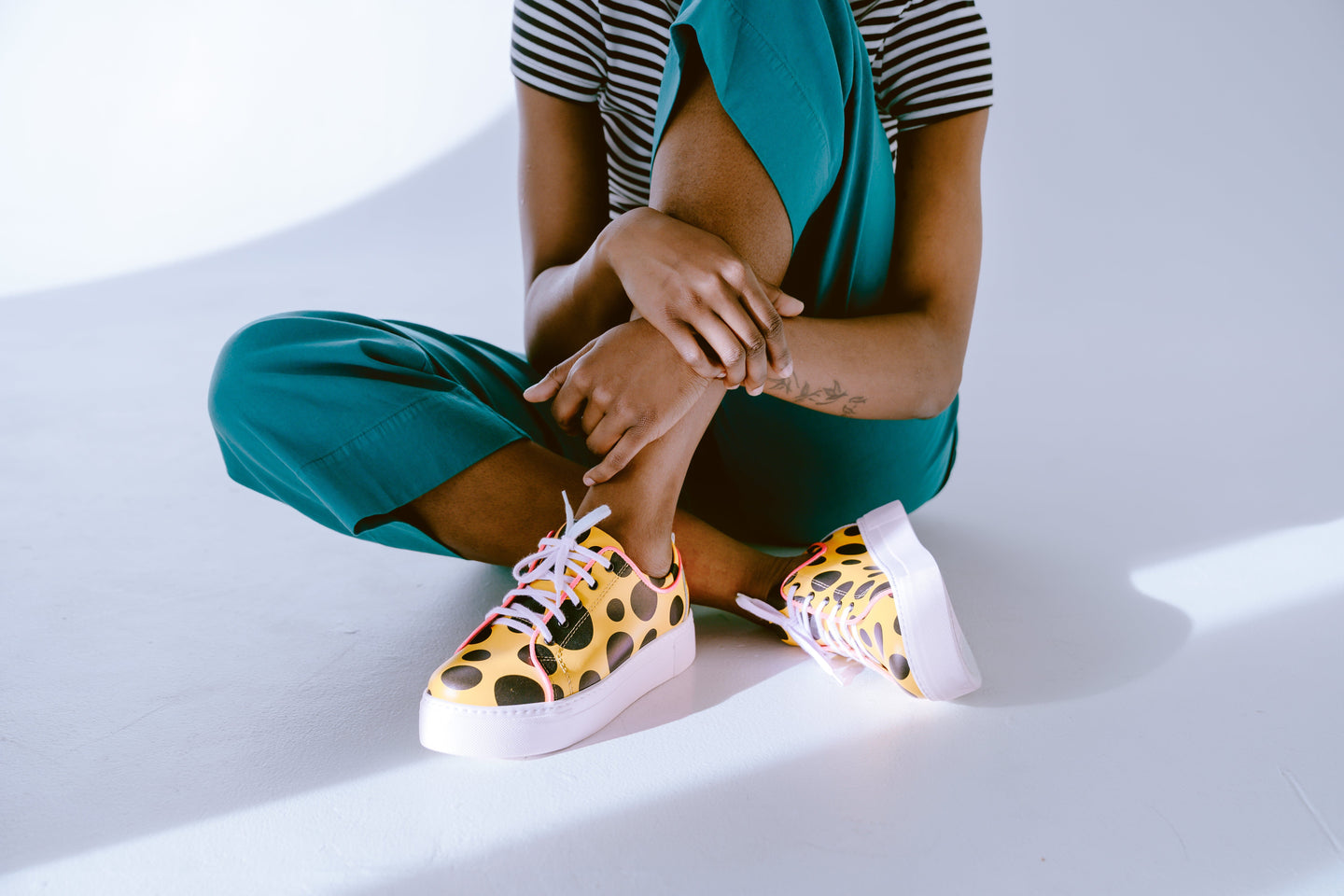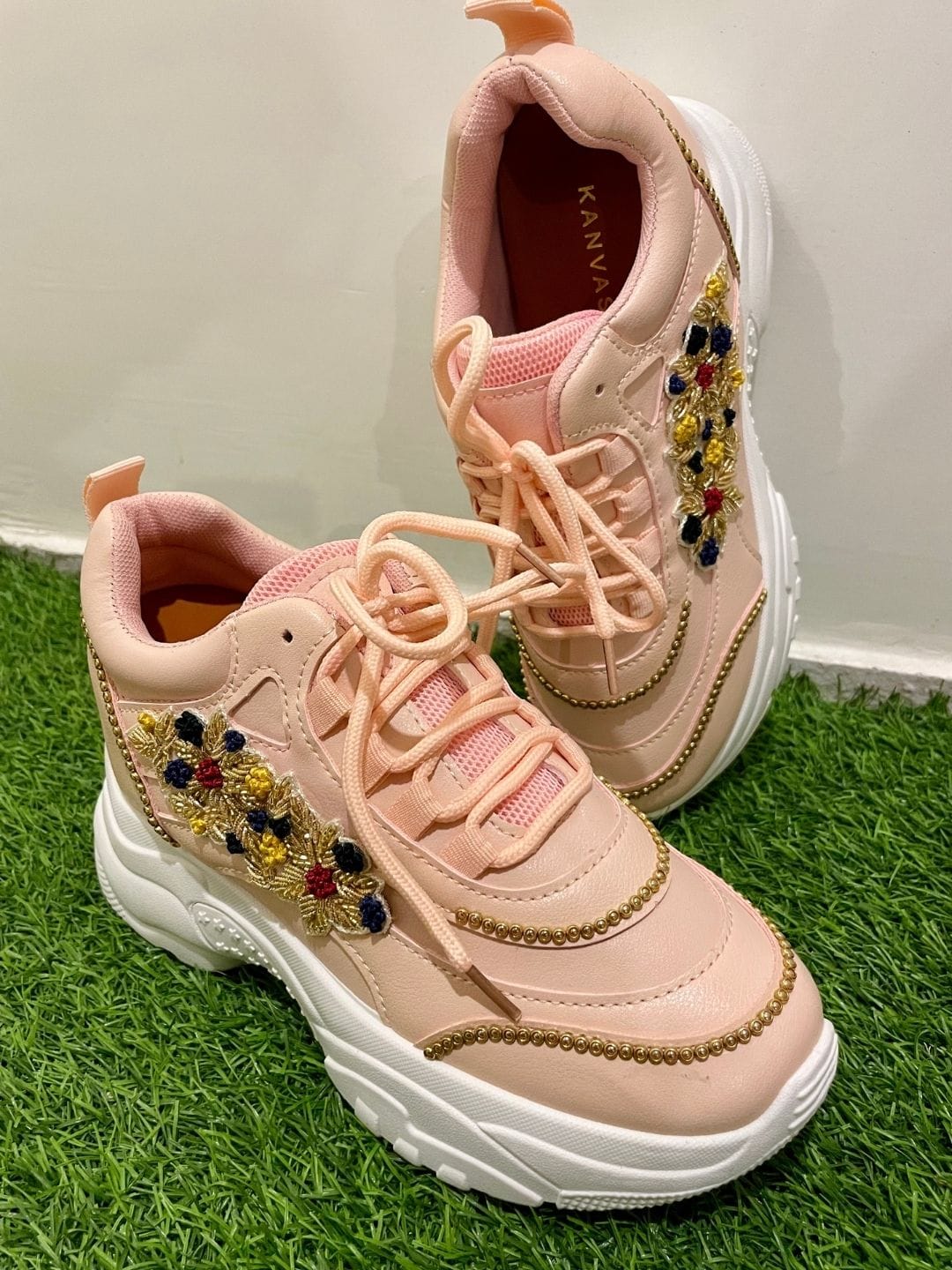Part 1: The Rise of Designer Sneakers
Level 1: Accessibility and Popularity
Designer sneakers have become increasingly popular in recent years, thanks to their unique blend of style and comfort. Once reserved for the wealthy and fashion-forward, designer sneakers are now accessible to a wider range of consumers, thanks to the rise of e-commerce and the growing popularity of athleisure wear.
Level 2: Fashion and Function
Designer sneakers combine the best of both worlds: fashion and function. They are made with high-quality materials and construction, and they feature stylish designs that can elevate any outfit. At the same time, designer sneakers are comfortable and supportive, making them ideal for everyday wear.
Part 2: Types of Designer Sneakers
Level 1: Classic Low-Tops
Classic low-top sneakers are a versatile and timeless choice. They can be dressed up or down, and they go with almost any outfit. Some popular classic low-top sneakers include the Nike Air Force 1, the Adidas Stan Smith, and the Vans Old Skool.
Level 2: High-Tops and Platforms
High-top sneakers offer more support and coverage than low-tops, making them ideal for activities like basketball and hiking. Platform sneakers add a touch of height and style to any outfit. Some popular high-top and platform sneakers include the Converse Chuck Taylor All-Star, the Dr. Martens Jadon, and the Buffalo London Classic.
Part 3: Choosing the Right Designer Sneakers
Level 1: Consider Your Style
When choosing designer sneakers, it’s important to consider your personal style. Do you prefer classic and understated sneakers, or do you like to make a statement with your footwear? Once you know your style, you can start narrowing down your choices.
Level 2: Fit and Comfort
Fit and comfort are essential when choosing designer sneakers. Make sure to try on several pairs before you buy to find the ones that fit your feet best. You should also consider the materials used in the sneakers. Leather sneakers are durable and breathable, while mesh sneakers are lightweight and airy.
Part 4: Caring for Your Designer Sneakers
Level 1: Regular Cleaning
To keep your designer sneakers looking their best, it’s important to clean them regularly. Use a soft brush or cloth to remove dirt and debris, and then wipe them down with a damp cloth. If your sneakers are made of leather, you can use a leather cleaner and conditioner to keep them soft and supple.
Level 2: Professional Cleaning
If your designer sneakers are heavily soiled or stained, you may need to take them to a professional cleaner. Professional cleaners have the equipment and expertise to remove even the toughest stains without damaging your sneakers.
Part 5: Sustainability in the Designer Sneaker Industry
Level 1: The Environmental Impact of Sneaker Production
The production of sneakers can have a significant environmental impact. The materials used, the manufacturing process, and the transportation of sneakers all contribute to greenhouse gas emissions, water pollution, and waste.
Level 2: Sustainable Practices in the Designer Sneaker Industry
Some designer sneaker brands are taking steps to reduce their environmental impact. They are using sustainable materials, such as recycled polyester and organic cotton. They are also investing in renewable energy and reducing waste in their manufacturing processes.
Level 3: The Role of Consumers
Consumers play a vital role in promoting sustainability in the designer sneaker industry. By choosing to buy sneakers from brands that are committed to sustainability, consumers can help to reduce the environmental impact of sneaker production. Consumers can also choose to buy sneakers made from recycled materials, and they can donate or recycle their old sneakers.
Level 4: The Future of Sustainability in the Designer Sneaker Industry
The future of sustainability in the designer sneaker industry is bright. More and more brands are recognizing the importance of sustainability, and they are investing in sustainable practices. Consumers are also becoming more aware of the environmental impact of their purchases, and they are demanding more sustainable products. As a result, the designer sneaker industry is moving towards a more sustainable future.
Additional Content
The History of Designer Sneakers
The history of designer sneakers can be traced back to the early 20th century, when athletic shoes began to be worn for everyday use. In the 1970s, designer brands such as Gucci and Prada began to produce their own lines of sneakers, and the trend quickly caught on. Today, designer sneakers are a staple of the fashion industry, and they are worn by people all over the world.
Celebrity Sneaker Endorsements
Celebrity sneaker endorsements have played a major role in the popularity of designer sneakers. In the 1980s, Michael Jordan’s endorsement of Nike Air Jordan sneakers helped to make them one of the most popular sneakers in the world. Today, many celebrities have their own lines of designer sneakers, including Rihanna, Kanye West, and Pharrell Williams.
The Resale Market for Designer Sneakers
The resale market for designer sneakers is huge. Some rare and exclusive sneakers can sell for thousands of dollars on resale websites such as StockX and GOAT. The resale market is driven by collectors and sneaker enthusiasts who are willing to pay top dollar for the latest and greatest sneakers.
The Cultural Impact of Designer Sneakers
Designer sneakers have had a significant cultural impact. They have been featured in movies, TV shows, and music videos. They have also been used as a form of self-expression and identity. Designer sneakers are a symbol of status, wealth, and fashion.
Conclusion
Designer sneakers are a stylish, comfortable, and versatile choice for women of all ages. When choosing designer sneakers, it’s important to consider your personal style, fit and comfort, and the sustainability of the brand. With proper care, your designer sneakers will last for many years to come. Designer sneakers are a stylish, comfortable, and versatile choice for women of all ages. When choosing designer sneakers, it’s important to consider your personal style, fit and comfort, and the sustainability of the brand. With proper care, your designer sneakers will last for many years to come. Overall, the future of designer sneakers is bright. We can expect to see continued innovation in design, materials, and production methods. We can also expect to see a greater focus on sustainability as brands respond to the demands of consumers.



